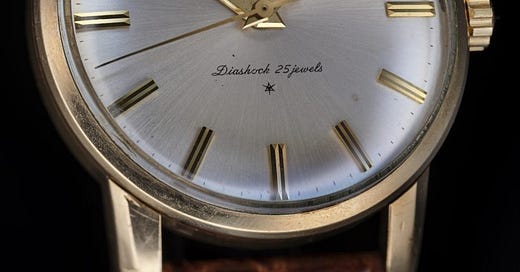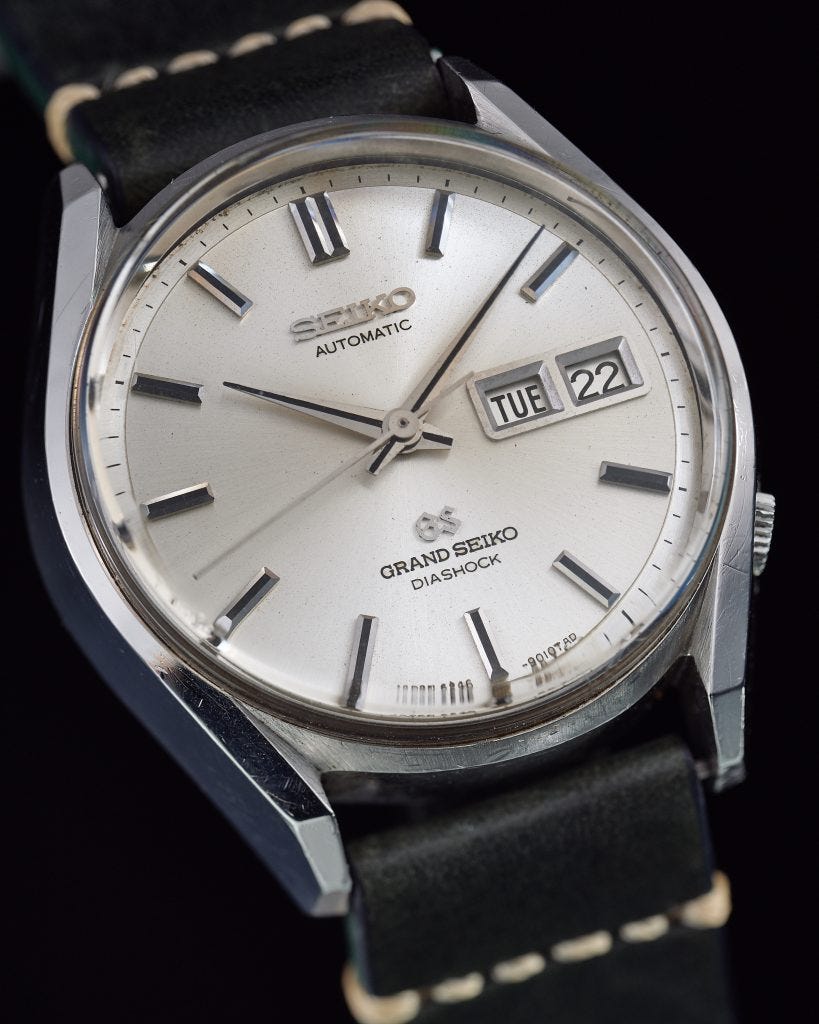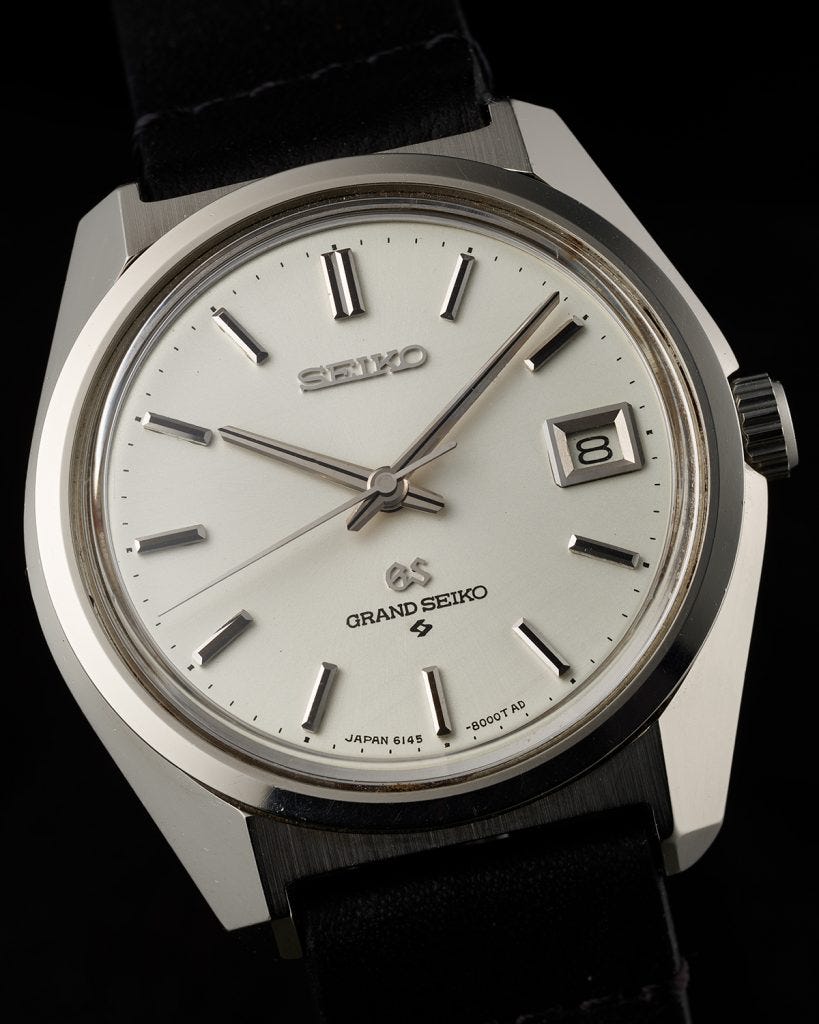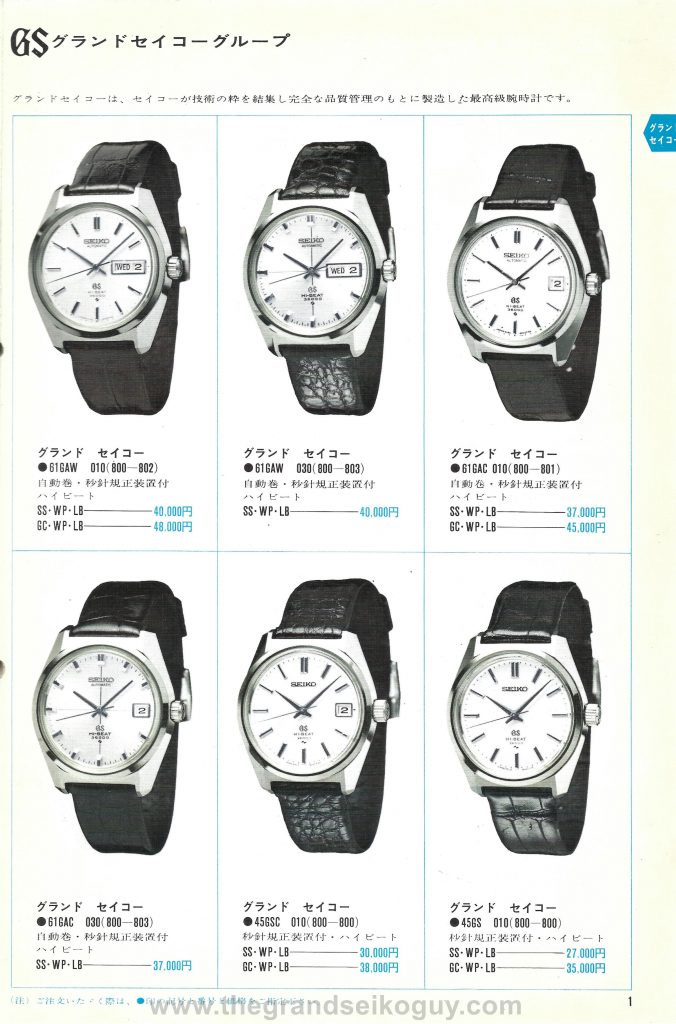A remarkable discovery
The 4522-8000 "early dial"
Over the course of many years of researching, collecting, and trading vintage Grand Seiko, we have encountered a number of fascinating discoveries along the way.
Whether it was learning of the existence of the "AD" dial variant of the first Grand Seiko, the -9010 dial variants of the 6246-9001's, or discovering a remarkable 43999 dial destined for a watch that never was, vintage Grand Seiko does seem to have a knack of turning up "just one more" surprise, right at the moment when you think that finally, maybe, you have seen it all.
The three examples mentioned above are all fascinating because they are tantalizingly close to being "missing links" in the historical arc of the vintage Grand Seiko era.
AD dialed "Firsts" were introduced right at the very end of the production life of the first Grand Seiko, and whilst typically people focus on the fact that SD/AD dial suffixes provide insight into the material of the dial markers, it is the fact that the dials have a sunburst finish that provides a design bridge to the second Grand Seiko, the 43999 "Self-dater".
And whilst the orphaned dial pictured below would seemingly not have a matching case that it could be placed in (there is no cap gold variant of the 43999), it does of course fill a gap between the steel-cased 43999 and the eventual introduction of the cap gold variant of the 57GS in the supplement to the 1966 Seiko catalogue.
As for the -9010 dial variants of the 62GS, we discussed in detail in an earlier article how they were the first of the vintage Grand Seiko dials to not be created entirely from flat polished sculpted metal. We speculated that possibly they were used to evaluate market reaction to a pretty significant - not to mention very early - deviation from Seiko's famed "Grammar of Design" rules when the 61GS range was introduced in 1968.
On September 1st 2021, a highly respected Japanese collector posted a photo on his Instagram feed of a watch that could quite easily have been passed over without a second glance
You could be forgiven if this appeared in your feed and you paid it a cursory internal compliment, perhaps dropped a quick "like", and then scrolled on by. But if you did, you'd be missing what is in our view one of the most exciting vintage Grand Seikos to surface since we started researching the brand.
It's very easy to see the detail here and miss the significance of the overall picture.
4522-8000, check. Super condition - case and dial are beautiful.
About that dial layout. Seiko up top, GS logo, Grand Seiko text, and Daini logo down bottom. All present and correct, right?
Right?
Hold on a moment... have a nagging feeling at the back of your head that something is very, very not right at all here?
The 4520/2-8000's were introduced as the successors to the legendary 44GS in the supplement to 1968's volume 2 catalogue, and the dials are nothing like what we have just seen!
But that dial in the Instagram post - why is it so familiar? Why doesn't it look "wrong"?
Well, firstly it's because of this -
The 4522-8000 featured in @tokyo_watchs feed has the exact same dial layout as the late dial 4420-9000.
But secondly, it also has the exact same dial layout as a watch introduced just a few months earlier in the main volume 2 catalogue from 1968 -
Here we see the initial introduction of the 61GS series, featuring the early "Grand Seiko" dial.
Let's now consider the timeline, and put them all side-by-side.
First up the 4420-9000 late dial, introduced in the same 1968 volume 2 catalogue as the 6145-8000 early dial - pictured next - and then finally this remarkable example of a "early dial" 4522-8000, a reference that was introduced in the supplement to 1968's volume 2 catalogue, which would have been published probably just 4-5 months after the main catalogue.
And in this context, a 4522-8000 with this dial layout makes total sense!
Both the late dial 4420-9000 and the early dial 6145-8000 make their sole catalogue appearance in 1968's volume 2. If you take a look at volume 1 of the 1969 catalogue - that would have been published just a month or two following 68's V2 supplement - you will find that the 4420-9000 has now been dropped from the range, the 6145-8000 has moved to the later dial variant, and the overall dial layout of that watch matches that of the 4520/2-8000 dials that we are used to seeing.
We would encourage you to click the link above through to the article on this catalogue, since it includes a discussion of how the dial layouts on the range were evolving through 1968 and into early 1969.
Our learning of the existence of this early-dial variant of the 4522-8000 fits into this dial evolution absolutely perfectly, and is just the latest example to be uncovered of the fascinating timeline of the vintage Grand Seiko references.
We are extremely grateful to @tokyo_watchs for allowing us to use the photos he provided of his watch for use in this article. Do give him a follow as he has some absolutely stunning vintage Grand Seiko in his collection, and we are very excited to see what else he will be sharing in future posts.
Clearly this dial variant is extremely rare indeed, and we have never seen one before. Having said that, possibly because the watch just looks right, some may have been sold over the years without us even realising what we were looking at - we will do some digging on this and report back in due course.
One question of course remains...
Is there a 4520-8000 equivalent "out there" remaining to be discovered?
Whilst @tokyo_watchs reports that he has seen another example of the 4522-8000 like his own watch, he has never seen a 4520-8000 "early dial".
Logic would suggest that they quite possibly do exist though.
The hunt begins!













